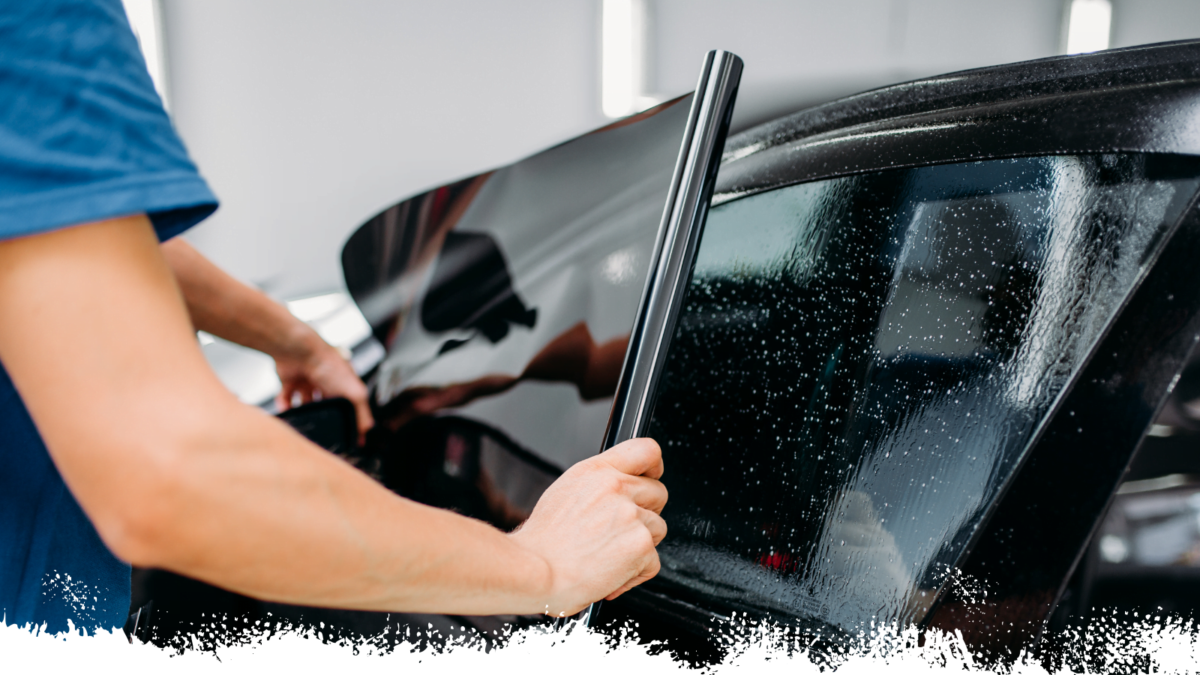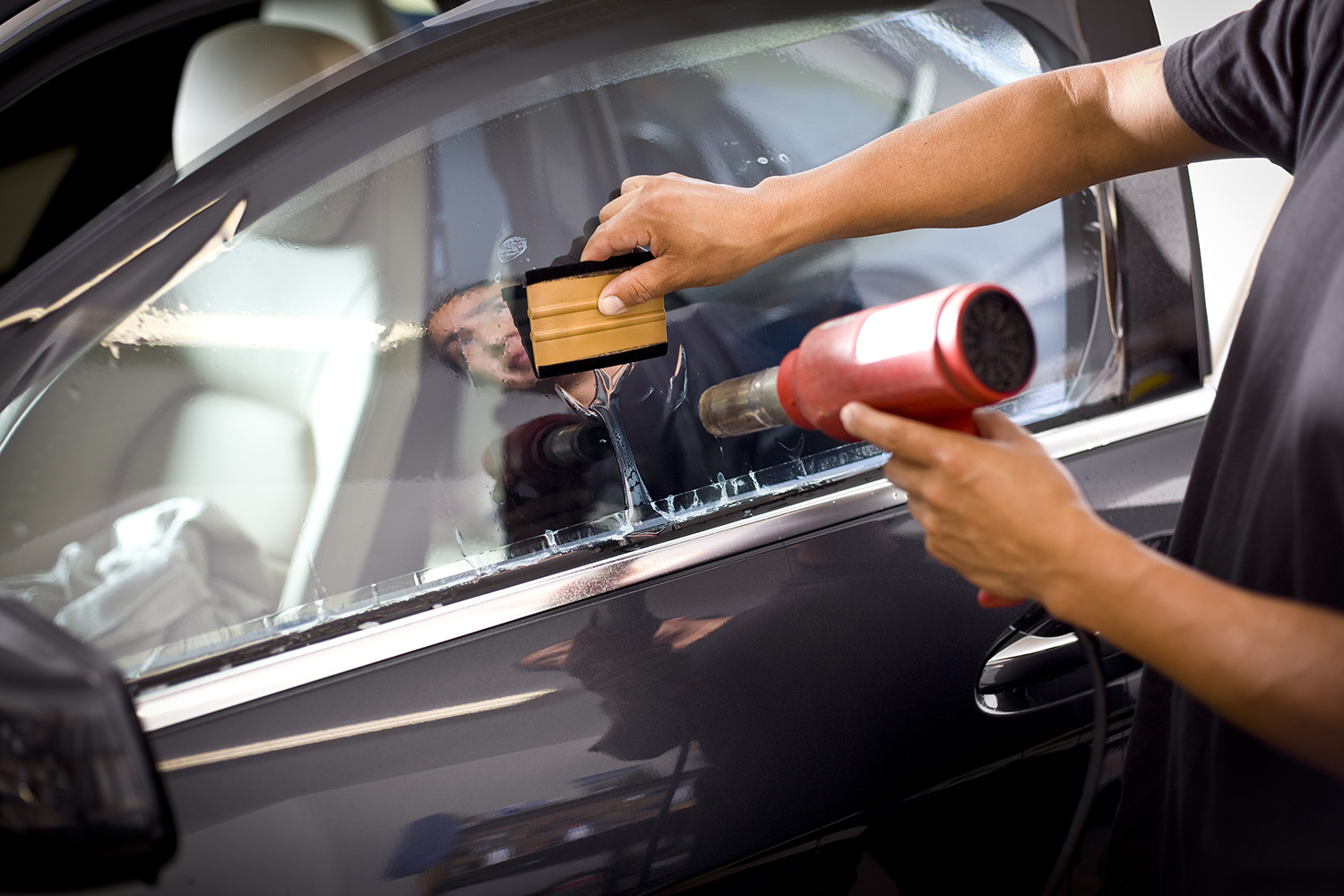Exploring the Various Kinds Of Home Window Tinting: A Comprehensive Introduction for Automobile Owners
In the realm of auto enhancements, window tinting stands out as a sensible option for lorry proprietors intending to boost convenience and aesthetics while providing essential defense. With numerous sorts of movies offered-- ranging from colored and metalized to innovative ceramic choices-- each deals unique advantages and possible drawbacks that merit careful consideration. Recognizing the legal regulations governing tinting in various territories adds another layer of complexity to the decision-making process. As we explore these choices, the effects for both capability and compliance become progressively clear.
Advantages of Home Window Tinting
Home window tinting offers a myriad of advantages that boost both the visual appeal and capability of lorries. One of the primary advantages is the reduction of harmful ultraviolet (UV) rays, which can lead to skin damages and boost the risk of skin cancer cells. By obstructing as much as 99% of UV radiation, tinted windows supply vital security for passengers throughout daily commutes or lengthy trips.
In addition, home window tinting dramatically enhances interior comfort by minimizing glare and heat accumulation. This not only creates a much more enjoyable driving experience yet also decreases the dependence on cooling, leading to fuel financial savings. Enhanced privacy is an additional vital advantage; tinted home windows obscure the sight into the automobile, safeguarding personal possessions and ensuring a complacency for passengers.
Furthermore, window tinting can extend the life-span of a car's inside by reducing sun damages, such as fading and splitting of furniture. Ultimately, several territories recognize the aesthetic value of tinted windows, which can raise an automobile's overall look and resale worth. In summary, the diverse advantages of window tinting make it a useful investment for automobile proprietors looking for to boost comfort, safety and security, and design.
Types of Window Tint Movies
A variety of home window color films are readily available on the market, each made to meet various needs and preferences. One of the most common types consist of dyed, metalized, ceramic, and hybrid movies.
Dyed films are preferred for their visual appeal, as they offer a darker color without mirroring light. They are generally less costly however might discolor over time. Metalized films, on the other hand, include steel fragments that mirror warmth and UV rays, enhancing toughness and efficiency. They may interfere with electronic signals.
Ceramic movies stand for a premium choice, providing remarkable warm being rejected and UV security without the disadvantages of reflectivity. These films are non-conductive and do not affect electronic devices, making them a popular selection amongst auto proprietors looking for high performance. Hybrid movies integrate the benefits of dyed and metalized movies, using a balance between price and efficiency.
Selecting the right film relies on private priorities such as heat denial, visual appeals, and budget. Recognizing the attributes of each type can guide lorry owners in making informed choices that line up with their specific demands and preferences.

Legal Laws on Tints
Lawful guidelines on home window tinting differ dramatically throughout various areas, mirroring neighborhood regulations and safety and security criteria targeted at making certain vehicle driver presence and safety and security. In the USA, as an example, each state has its very own collection of policies regulating the allowable levels of tint darkness, usually determined by Visible Light Transmission (VLT) portions. While some states allow darker tints for back home windows, others impose more stringent restrictions on front side home windows and windshields.
Internationally, regulations can vary much more considerably (window tinting clovis). Countries may apply full bans on tinting or restrict it to lighter tones. For instance, in the European Union, the front windshield must permit a minimum of 75% of light to pass through, while the front side home windows need to permit at the very least 70%.
Conformity with these policies is essential, important source as failing to stick can result in penalties, necessary removal of non-compliant colors, and even vehicle assessments. For that Visit Website reason, vehicle proprietors should acquaint themselves with their local legislations before using window tinting. Consulting with professionals and examining state or national guidelines can aid guarantee that any kind of selected color adhere to lawful standards, inevitably enhancing both security and visual appeals.
Installment Process and Considerations
When taking into consideration the installation of home window tinting for vehicles, a number of vital elements should be thought about to make sure an effective outcome. Firstly, choosing the right kind of tint is crucial, as different materials supply various degrees of warmth denial, UV defense, and aesthetic allure. In addition, it's important to check local policies pertaining to tint darkness and reflectivity to remain compliant with the law.
The installation process itself can be carried out DIY or by a professional. While DIY kits are available, professional installation is frequently recommended for optimal results. Specialists have the essential abilities, devices, and experience to make sure a perfect application, which reduces the risk of bubbles, creases, or peeling.
Before installment, the lorry's home windows ought to be completely cleaned and dried out to stop impurities from disrupting the adhesive. Appropriate pop over to this site preparation is important to achieving a smooth coating. It's advisable to set up setup during modest weather condition conditions, as severe temperatures can influence the healing process of the tint. By taking into consideration these aspects, vehicle proprietors can enhance their driving experience while guaranteeing the longevity and performance of their window color.
Upkeep and Care Tips
Correct maintenance and care are essential for protecting the look and functionality of window tinting after installment. To ensure durability, vehicle owners need to wait at the very least two days prior to rolling down their windows, enabling the glue to cure appropriately. Regular cleaning is necessary; however, it is very important to make use of mild, ammonia-free services and soft microfiber fabrics to stay clear of damaging the tint.
When washing your automobile, stay clear of high-pressure water sprays straight on the tinted windows, as this can deteriorate the glue with time. Instead, use a damp fabric to wipe the surface area delicately. In addition, avoid using abrasive materials, such as rough sponges or brushes, which can damage the tint.
Check your home window color periodically for signs of bubbling, peeling, or discoloration. Seek advice from an expert to identify whether repair services or substitutes are necessary if any issues are spotted. Auto parking in shaded areas or using sunshades can better secure your tint from extended sun direct exposure, which can lead to fading.
Verdict
In summary, recognizing the various types of home window tinting is essential for lorry owners intending to enhance comfort, appearances, and security. Correct installation and upkeep better guarantee ideal efficiency and long life of the tint.
In summary, the diverse advantages of home window tinting make it an important financial investment for automobile proprietors seeking to enhance comfort, security, and design.
Legal guidelines on home window tinting vary dramatically across various regions, showing local legislations and safety standards aimed at guaranteeing motorist exposure and security. While some states allow darker colors for back windows, others enforce more stringent limits on front side home windows and windscreens.

Comments on “Costs Window Tinting Clovis Solutions for Residences and Businesses”